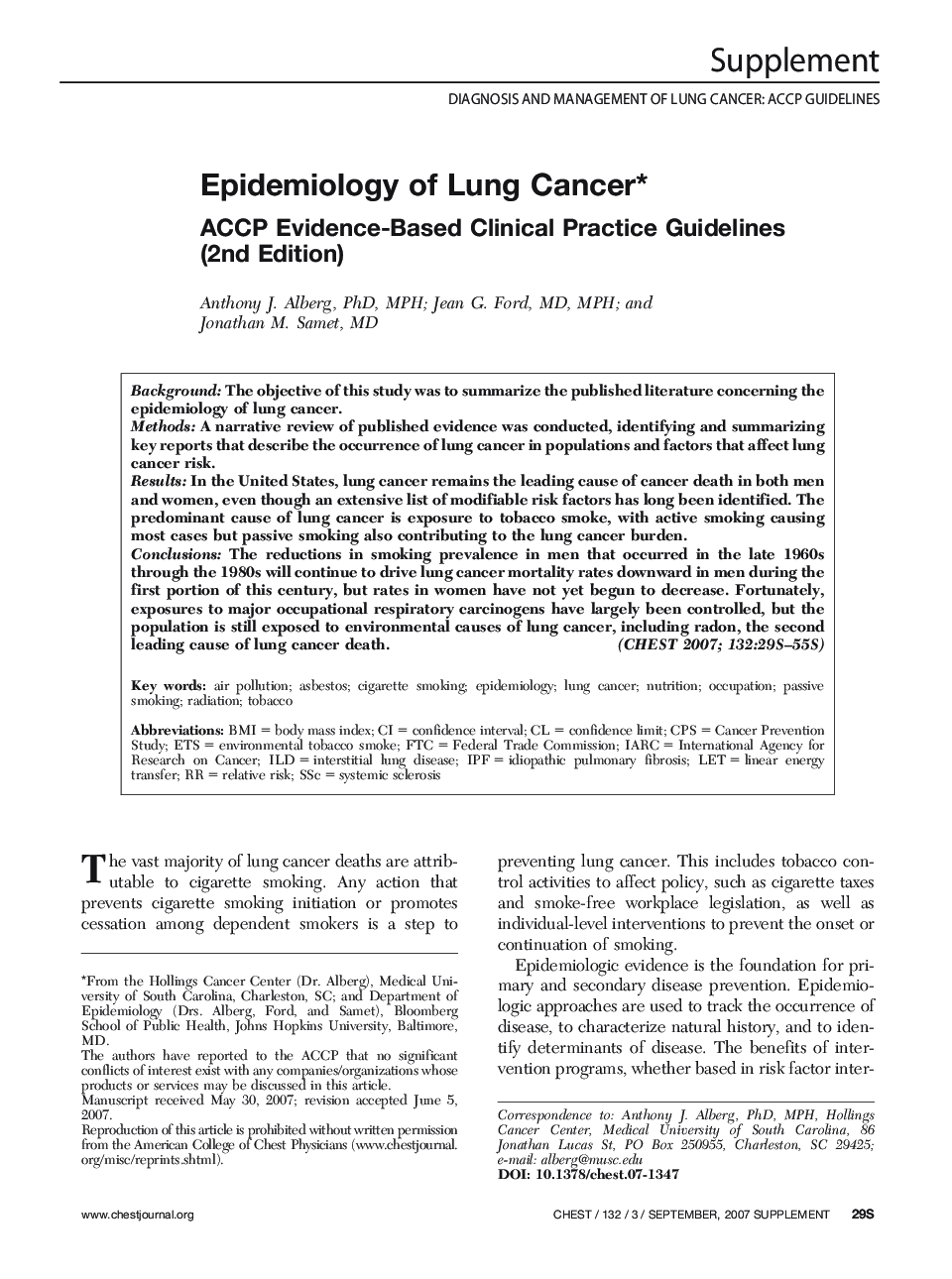| Article ID | Journal | Published Year | Pages | File Type |
|---|---|---|---|---|
| 2906385 | Chest | 2007 | 27 Pages |
Abstract
The reductions in smoking prevalence in men that occurred in the late 1960s through the 1980s will continue to drive lung cancer mortality rates downward in men during the first portion of this century, but rates in women have not yet begun to decrease. Fortunately, exposures to major occupational respiratory carcinogens have largely been controlled, but the population is still exposed to environmental causes of lung cancer, including radon, the second leading cause of lung cancer death.
Keywords
cpsSSCIPFETsFTCILDAir pollutionInternational Agency for Research on CancerIARC یا International Agency for Research on CancerLETsystemic sclerosisOccupationLinear Energy TransferEpidemiologyInterstitial lung diseaseNutritionTobaccoconfidence limitRelative riskenvironmental tobacco smokeLung cancerPassive smokingbody mass indexBMIconfidence intervalidiopathic pulmonary fibrosiscigarette smokingRadiationAsbestosFederal Trade Commission
Related Topics
Health Sciences
Medicine and Dentistry
Cardiology and Cardiovascular Medicine
Authors
Alberg PhD, MPH, Ford MD, MPH, Samet MD,
